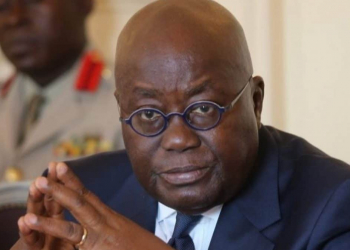The total deposits for commercial banks in the country increased to 42.3 billion cedis as at the end of December 2015. The figure increased from 36.2 billion cedis in the previous year, representing about 17 percent jump over the one year period.
This is according to a 2016 Banking survey report released by the Price Water House coopers (PWC).
The study attributed the phenomenon to the quest by commercial banks to drive deposit mobilisation as a result of intense competition from non-bank deposit taking institution.
It explained, “Banks have deployed innovative strategies to drive deposit mobilisation.”
Key among the strategies include regular promotions and introduction of new products targeted at particular market segments and web based solutions.
The report however stated that, “banks continue to pursue cheaper deposits, that is current and savings accounts, in order to increase their net interest income and provide a cheaper source of funding for their operations.”
Current account deposits highest contributor to deposits
In line with this pursuit, current and savings account deposits accounted for 48.0 percent and 15 percent of all deposits.
The figure increased from the 2014 figures of 47.0 percent and 14 percent respectively. Call deposits also represented 8.0% of the industry deposits, from the 6.0% in 2014.
The proportion of time and fixed deposits was however maintained at 23.0%. Meanwhile deposits from other banks reduced from GHC3.8bn in 2014 to GHC2.9bn in 2015 as banks held relatively higher levels of liquid assets to meet their operational needs.
The industry liquid assets increased to GHC12.6bn at December 2015 from GHC11.6bn as at December 2014.
Banks’ performances
Five banks; Unibank, HFC Bank, Fidelity, Barclays and Guaranty Trust banks, all engaged in one activity or the other to improve their deposit base for the period under review.
For Unibank, its deposits grew significantly in which made it move its shares from 4.9 percent in 2014 to 7.6 percent in 2015.
The report explained that the underlying strategies for the deposit growth included deposit mobilizing promotions and introduction of targeted products such as the ‘Sika Collect’ product which provides customers with the convenience of banking daily business proceeds through collection by the bank’s mobile bankers.
The bank also signed on about 3,000 new customers from its ‘Super 360 Promo’ which was aimed at engaging its existing customers and attracting new ones with an ultimate cash prize of GH¢360,000. Another bank, HFC, also increased its market share of deposits from 2.0 percent in 2014 to 2.2 percent in 2015.
Its balance now stands at GHC883 million cedis.
In addition, the change in the ownership structure of HFC Bank after the take-over by Republic Bank in 2015 is expected to impact the competitive position of the bank in the coming years.
With the implementation of a three year strategy focused on deposit mobilisation, asset creation, loan recoveries, cost management and revitalization of culture, the bank seeks to become a Tier 1 bank in the next three years.
Meanwhile Fidelity and Barclays Bank Ghana Limited were the only first quartile banks to have increased their market share.
Fidelity’s full incorporation of Procredit Savings and Loans Company Limited after acquiring it in 2014, coupled with the bank’s “save for gold promotion” increased deposits from 6 percent to 7.3 percent between the one year period. Similarly Barclays Bank also increased its share of the market from 6.5 to 6.7 percent between 2014 and 2015.
Its promotions during the year including the “Live your Dream Promotion”, the “Barclays Premier League Promotion” and the “Double your Salo Promotion” which required account holders to receive their salary through the bank and use any of the bank’s digital banking platforms.
Guaranty Trust Bank which maintained its position, continues to drive its operations and competitive strategy with solutions in technology and electronic banking. With total deposits of GHC953.8m, the bank’s deposits represents 2.3% of the industry total, an improvement from the prior year’s 2.2%.
Drop in percent of market share
Although Ecobank Ghana and GCB Bank maintained their positions with the largest percent and second largest shares of industry deposits respectively, their shares dropped from 12 to 11.7 and 8.5% to 8 percent respectively.
Standard Chartered Bank also lost some share of industry deposits from 7.1% in 2014 to 6.1% in 2015 despite growing its deposits by 10.0% from 2.2 billion cedis in 2014 to 2.4billion cedis in 2015. With increasing competition in the industry as banks strive to reach the top tier bracket, first quartile banks will have to raise their game to ensure they are able to maintain or grow their market share.
Strategising for the way forward
In the coming years, the banks that will make significant strides in deposit mobilisation are those that will devise innovative products and solutions to receive deposits, at the convenience of the customer.
This will include seamless integration of banking applications with the mobile money platform to allow customers to deposit via the mobile phone.
Sign up for Ghana Star News to receive daily email alerts of breaking news in Ghana. GhanaStar.com is your source for all Ghana News. Get the latest Ghana news, breaking news, sports, politics, entertainment and more about Ghana, Africa and beyond.


